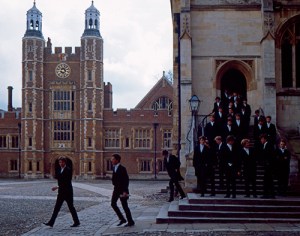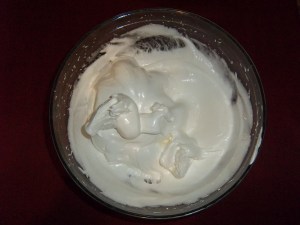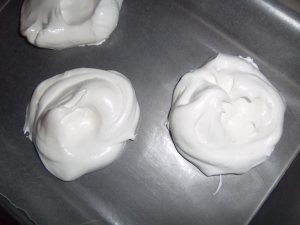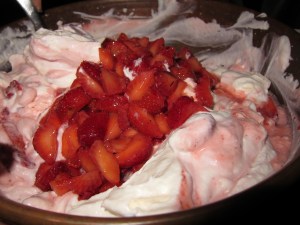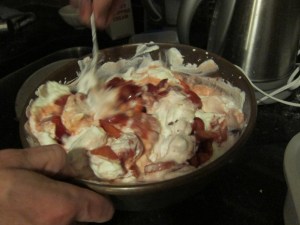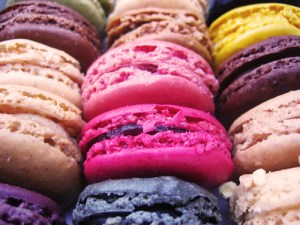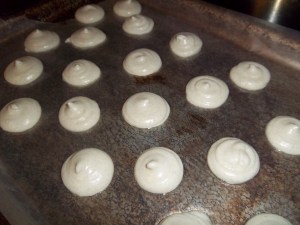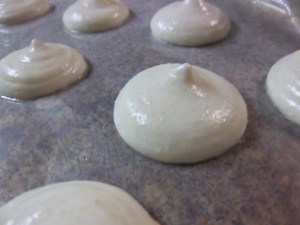I did a bit of a dinner party recently for my work chums and for dessert I made an Eton Mess.
I always thought that the Eton Mess was ‘invented’ around the 1920s when, during the annual cricket match at Eton College, a rather giddy labrador sat upon the picnic basket containing the strawberry pavlova, squashing it. The plum-mouthed boys didn’t care a single jot that their dessert had been essentially ruined (and probably covered in dog hair) and ate the thing anyway, preferring it to the pavlova. And so the Eton Mess was born and served up as a summertime pudding ever after.
It turns out this story is total nonsense, and was just invented by the cook during the 1930s. I didn’t even have the decade right.
Eton College school yard and chapel
Although I know the Mess as a delicious mixture of strawberries, broken meringue and cream, it was also made with bananas too.
Here’s my recipe for Eton Mess, hopefully the Eton Old Boy and chef, Hugh Fearnley-Whittingstall would approve of this recipe. Although he says that they didn’t serve it during his time at the college. Ah well, you can’t have everything.
If you like the blogs and podcast I produce, please consider treating me to a virtual coffee or pint, or even a £3 monthly subscription: follow this link for more information.
This pudding was for 10 people, so you can adjust the quantities accordingly if you want to make it for fewer folk. Or just make loads and eat it all to yourself like the fat little piggy you are!
Ingredients:
4 egg whites
10 oz of caster sugar
pinch of salt
2 lbs of strawberries, hulled and chopped
1 tbs of vanilla sugar
2 pints of double (heavy) cream
strawberry jam
First off all you need to make your meringues – you can of course buy some, but they are quite easy to make. Start by whisking the egg whites with the salt until frothy, then add the sugar bit-by-bit with you electric mixer on a medium setting. The mixture will become very thick and glossy-looking.
Preheat the oven to 100°C (200°F). Line some baking trays with some lightly-oiled wax paper and spoon the mixture onto it to make nests. Use a serving spoon so that each nest is the same size and use the back of the spoon to make the nest shape.
I like to do them this way, as they look nice and home-made. However, if you are handy with a piping bag, then pipe out the mixture. Place trays in the oven and keep the door slightly ajar using the handle of a wooden spoon. The nests need to stay in the oven for around 3 1/2 hours so that they harden. Don’t worry if you leave them in longer, as they can’t really burn at this low temperature.
Next, place the strawberries in a bowl with the vanilla sugar (see here and here for two recipes if you want to make your own) and allow them to macerate together at room temperature for at least twenty minutes. Now whip the cream until it forms soft peaks. Now all that needs to be done is create the mess. Crush the meringue nests and stir them into the cream. Fold in the strawberries and their juice.
Lastly, stir through some strawberry jam or a further sweet strawberry hit. Pile into bowls and serve straight away before the meringue gets the chance to go soggy.

